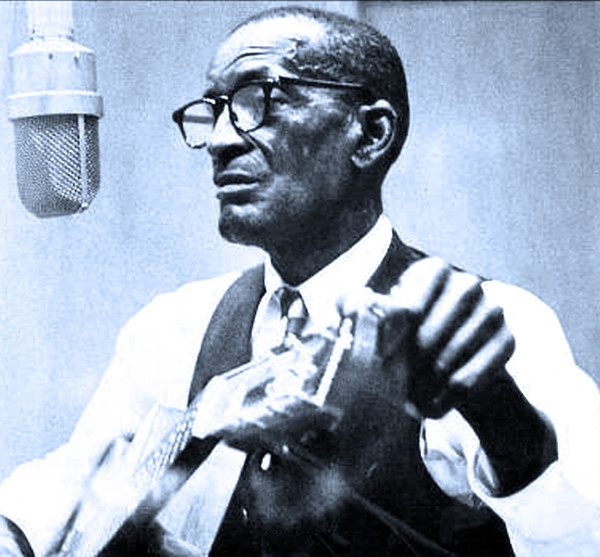John Adams (“Sleepy John”) Estes was born in Ripley, Tennessee on January 25th of 1899 or 1900. The earlier date was on his tombstone and the latter on his World War I draft card.
Estes is an important blues guitarist, songwriter and singer who influenced many subsequent musicians, including John Fahey. The Wikipedia profile says that his career spanned more than fifty years. His main collaborators were guitarist and mandolin player James “Yank” Rachell and Hammie Nixon, who played harmonica.
Estes really wasn’t drowsy:
Some accounts attribute the nickname Sleepy to a blood pressure disorder or narcolepsy. Bob Koester, the founder of Delmark Records, said that Estes simply had a “tendency to withdraw from his surroundings into drowsiness whenever life was too cruel or too boring to warrant full attention.”

Sleepy John Estes
The Tennessee Historical Society wrote that Estes played an important role in “reestablishing rural blues within the American music canon during the folk revival of the 1960s.”

The profile says that rural southern blues players were becoming popular and record companies sent scouts to the south to find regional talent. In 1929, Victor Records’ Ralph Peer recorded Estes and, presumably, Nixon and Rachell. Some of the songs with which Estes is associated are “Diving Duck Blues” and “Milkcow Blues.”
The trio migrated to Chicago and recorded for RCA Victor and Decca. Life in the big city, the profile says, enabled Estes to refine his style. He worked with the Rabbit Foot Minstrel Show and recorded songs such as “Drop Down Mama” and “Some Day Baby Blues.”
Estes returned to the south, took up sharecropping and became completely blind. He recorded occasionally and remained poor. Many blues fans had assumed he was dead because he already sounded like an old man in the early recordings. He wasn’t, and was found by filmmaker David Blumenthal. A subsequent documentary led to his rediscovery and a second career. Estes played the 1964 Newport Folk Festival, had radio exposure and toured European Tours.
About is “Mailman Blues,” with featuring Yank Rachell. Below is “Someday Baby.”
The Tennessee Encyclopedia was cited in the blue box.

